VMWare 中 Ubuntu 网络配置
作者 | WenasWei
前言
在使用 VMWare 安装 Ubuntu18.04-Linux 操作系统下时产生系统配置问题,正好借这个机会,和大家一起分享下 Ubuntu 18.04 的一些基本操作和网络配置,主要涉及到 NAT 网络和网络配置处理,将从以下几点介绍:
一、Ubuntu 系统信息与修改主机名
1.1 查看 Linux 系统版本信息
1、查看 Linux 内核版本命令(两种方法):
cat /proc/version
uname -a
Linux 内核版本信息:
$cat /proc/versionLinux version 4.15.0-88-generic (buildd@lgw01-amd64-036) (gcc version 7.4.0 (Ubuntu 7.4.0-1ubuntu1~18.04.1)) #88-Ubuntu SMP Tue Feb 11 20:11:34 UTC 2020$ uname -aLinux wenas 4.15.0-88-generic #88-Ubuntu SMP Tue Feb 11 20:11:34 UTC 2020 x86_64 x86_64 x86_64 GNU/Linux
复制代码
2、查看 Linux 系统版本的命令
(1)lsb_release -a
即可列出所有版本信息:
$ lsb_release -aNo LSB modules are available.Distributor ID: UbuntuDescription: Ubuntu 18.04.2 LTSRelease: 18.04Codename: bionic
复制代码
这个命令适用于所有的 Linux 发行版,包括 RedHat、SUSE、Debian…等发行版。
(2) cat /etc/redhat-release
这种方法只适合 Redhat 系的 Linux:
$ cat /etc/redhat-release
CentOS release 6.5 (Final)
复制代码
(3) cat /etc/issue
此命令也适用于所有的 Linux 发行版。
在终端窗口中输入命令:
$ cat /etc/issueUbuntu 18.04.2 LTS \n \l
$ hostnamewenas
复制代码
可以查看到当前主机操作系统为:Ubuntu 18.04.2 LTS, 主机名为 wenas
1.2 修改主机名
(1)永久修改主机名
reboot
#重启后重连可以看到主机名修改成功Last login: Wed May 12 00:38:12 2021 from 192.168.254.1root@hadoop1:~#
复制代码
(2)临时修改主机名
$ hostname testname$ uname -aLinux testname 4.15.0-88-generic #88-Ubuntu SMP Tue Feb 11 20:11:34 UTC 2020 x86_64 x86_64 x86_64 GNU/Linux
复制代码
其中“新主机名”可以用任何合法字符串来表示。不过采用这种方式,新主机名并不保存在系统中,重启系统后主机名将恢复为原先的主机名称。
这样主机名字就临时被修改为 testname ,但是终端下不会立即显示生效后的主机名,重开一个终端窗口(通过 ssh 连接的终端需要重新连接才可以)
二、Windows 设置 VMWare 的 NAT 网络
2.1 查看本机网络 VMnet8
(1)ipconfig 查看 VMnet8 网络
VMnet8 网络适配器信息:
IPv4 地址 : 192.168.254.1
子网掩码 : 255.255.255.0
默认网关: 192.168.254.2
(2)打开“网络和 Internet”设置
ip 地址、子网掩码与默认网关一致
2.2 VMWare 虚拟机设置
三、Linux 网关设置与配置静态 IP
3.1 Linux 网关设置与配置静态 IP
$ vi /etc/netplan/50-cloud-init.yaml
network: ethernets: ens33: # 配置静态IP为192.168.254.130 addresses: [192.168.254.130/24] # 网关设置成 2.1 中的VMnet8 网络适配器默认网关192.168.254.2 gateway4: 192.168.254.2 # 网关设置成 2.1 中的VMnet8 网络适配器默认网关192.168.254.2 nameservers: addresses: [192.168.254.2] dhcp4: true version: 2
复制代码
如下图所示:
3.2 修改 DNS 解析文件
root@hadoop1:~# vi /etc/systemd/resolved.conf
[Resolve]DNS=1.1.1.1 8.8.8.8#FallbackDNS=#Domains=#LLMNR=no#MulticastDNS=no#DNSSEC=no#Cache=yes#DNSStubListener=yes
复制代码
3.3 重启服务器联网
重启服务器,联网更新 apt
$ reboot
root@hadoop2:~# apt-get updateHit:1 http://mirrors.aliyun.com/ubuntu xenial InReleaseGet:2 http://mirrors.aliyun.com/ubuntu xenial-security InRelease [109 kB] Get:3 http://mirrors.aliyun.com/ubuntu xenial-updates InRelease [109 kB] Get:4 http://mirrors.aliyun.com/docker-ce/linux/ubuntu bionic InRelease [64.4 kB]Get:5 http://mirrors.aliyun.com/ubuntu xenial-backports InRelease [107 kB]Get:6 http://mirrors.aliyun.com/ubuntu xenial-security/main amd64 Packages [1,646 kB]Get:7 http://mirrors.aliyun.com/ubuntu xenial-security/main Translation-en [380 kB]Get:8 http://mirrors.aliyun.com/ubuntu xenial-security/restricted amd64 Packages [9,824 B]Get:9 http://mirrors.aliyun.com/ubuntu xenial-security/universe amd64 Packages [786 kB]Get:10 http://mirrors.aliyun.com/ubuntu xenial-security/universe Translation-en [226 kB]Get:11 http://mirrors.aliyun.com/ubuntu xenial-security/multiverse amd64 Packages [7,864 B]Get:12 http://mirrors.aliyun.com/ubuntu xenial-security/multiverse Translation-en [2,672 B]Get:13 http://mirrors.aliyun.com/ubuntu xenial-updates/main amd64 Packages [2,048 kB]Get:14 http://mirrors.aliyun.com/ubuntu xenial-updates/main Translation-en [482 kB]Get:15 http://mirrors.aliyun.com/ubuntu xenial-updates/restricted amd64 Packages [10.2 kB]Get:16 http://mirrors.aliyun.com/ubuntu xenial-updates/universe amd64 Packages [1,220 kB]Get:17 http://mirrors.aliyun.com/ubuntu xenial-updates/universe Translation-en [358 kB]Get:18 http://mirrors.aliyun.com/ubuntu xenial-updates/multiverse amd64 Packages [22.6 kB]Get:19 http://mirrors.aliyun.com/ubuntu xenial-updates/multiverse Translation-en [8,476 B]Get:20 http://mirrors.aliyun.com/docker-ce/linux/ubuntu bionic/stable amd64 Packages [18.1 kB]Get:21 http://mirrors.aliyun.com/ubuntu xenial-backports/main amd64 Packages [9,812 B]Get:22 http://mirrors.aliyun.com/ubuntu xenial-backports/universe amd64 Packages [11.3 kB]Fetched 7,637 kB in 4s (1,738 kB/s) Reading package lists... Done
root@hadoop2:~# ping www.baidu.comPING www.wshifen.com (104.193.88.77) 56(84) bytes of data.64 bytes from 104.193.88.77: icmp_seq=1 ttl=128 time=167 ms64 bytes from 104.193.88.77: icmp_seq=2 ttl=128 time=166 ms64 bytes from 104.193.88.77: icmp_seq=3 ttl=128 time=166 ms64 bytes from 104.193.88.77: icmp_seq=4 ttl=128 time=166 ms64 bytes from 104.193.88.77: icmp_seq=5 ttl=128 time=167 ms
复制代码
四、Linux 修改 hosts 文件
4.1 修改目的与初始化额外主机
目的: 修改 hosts 文件主要是为了服务器之间可以使用服务器名直接进行访问,也可以通过 ip 地址进行访问
过程: 将 VMWare 中的 Linux 服务器 192.168.254.130 通过 管理克隆的方式克隆出 3 台主机,分别如下设置 ip 地址和主机名称,网络配置和主机名设置为永久主机名步骤如上所述设置。
主机 ip 与主机名对应关系:
192.168.254.130 hadoop1192.168.254.131 hadoop2192.168.254.132 hadoop3192.168.254.133 hadoop4
复制代码
4.2 修改 hosts 文件
新增内容如下:
$ vi /etc/hosts
127.0.0.1 localhost.localdomain localhost::1 localhost6.localdomain6 localhost6
# The following lines are desirable for IPv6 capable hosts::1 localhost ip6-localhost ip6-loopbackfe00::0 ip6-localnetff02::1 ip6-allnodesff02::2 ip6-allroutersff02::3 ip6-allhosts# 新增内容192.168.254.130 hadoop1192.168.254.131 hadoop2192.168.254.132 hadoop3192.168.254.133 hadoop4
复制代码
$ ping hadoop1PING hadoop1 (192.168.254.130) 56(84) bytes of data.64 bytes from hadoop1 (192.168.254.130): icmp_seq=1 ttl=64 time=0.018 ms64 bytes from hadoop1 (192.168.254.130): icmp_seq=2 ttl=64 time=0.079 ms64 bytes from hadoop1 (192.168.254.130): icmp_seq=3 ttl=64 time=0.079 ms64 bytes from hadoop1 (192.168.254.130): icmp_seq=4 ttl=64 time=0.026 ms64 bytes from hadoop1 (192.168.254.130): icmp_seq=5 ttl=64 time=0.026 ms64 bytes from hadoop1 (192.168.254.130): icmp_seq=6 ttl=64 time=0.029 ms64 bytes from hadoop1 (192.168.254.130): icmp_seq=7 ttl=64 time=0.028 ms64 bytes from hadoop1 (192.168.254.130): icmp_seq=8 ttl=64 time=0.029 ms
复制代码
4.3 scp 修改其他主机 hosts 文件
在 192.168.254.130 上分别针对 192.168.254.131、192.168.254.132 和 192.168.254.133 操作
root@hadoop1:~# scp /etc/hosts root@hadoop2:/etc/#输入hadoop2主机密码root@hadoop2's password: hosts 100% 371 194.6KB/s root@hadoop1:~# scp /etc/hosts root@hadoop3:/etc/#输入hadoop3主机密码root@hadoop3's password: hosts 100% 371 194.6KB/s root@hadoop1:~# scp /etc/hosts root@hadoop4:/etc/#输入hadoop4主机密码root@hadoop4's password: hosts 100% 371 194.6KB/s
复制代码
root@hadoop2:/# ping hadoop3PING hadoop3 (192.168.254.132) 56(84) bytes of data.64 bytes from hadoop3 (192.168.254.132): icmp_seq=1 ttl=64 time=0.220 ms64 bytes from hadoop3 (192.168.254.132): icmp_seq=2 ttl=64 time=0.234 ms64 bytes from hadoop3 (192.168.254.132): icmp_seq=3 ttl=64 time=0.417 ms
复制代码
五、Linux 免密码登录
5.1 背景
当在上面的几台主机相互登录时,需要输入每一台的登录机器密码,这简直是不能忍啊,所以,就有了这节 Linux 免密登录,在一个 Linux 机器上配置免密码登录其它服务器。
5.2 目标
四台服务器:在 192.168.254.130 免密码登录 192.168.254.131;192.168.254.132;192.168.254.133 这俩台机器,总结来说就是任一服务器可以免密码登录其它服务器。
5.3 生成公钥和密钥
使用以下命令生成公钥和私钥
$ ssh-keygen
Generating public/private rsa key pair.Enter file in which to save the key (/root/.ssh/id_rsa): Enter passphrase (empty for no passphrase): Enter same passphrase again: Your identification has been saved in /root/.ssh/id_rsa.Your public key has been saved in /root/.ssh/id_rsa.pub.The key fingerprint is:SHA256:2wrX44H3QnG4PLCi/ujwrDLalGwLrAxiX1iP/GlHNQI root@hadoop1The key's randomart image is:+---[RSA 2048]----+| || E || . . || ..oo. || . S+o+. ||.. .+ + .*= ||+o*. =.o=.*. ||O=.=o..+.=.+ ||+++=*.ooo ... |+----[SHA256]-----+
复制代码
5.4 把本地的 ssh 公钥文件安装到远程主机
使用以下命令把本地的 ssh 公钥文件安装到 192.168.254.131(hadoop2):
$ ssh-copy-id root@hadoop2
/usr/bin/ssh-copy-id: INFO: Source of key(s) to be installed: "/root/.ssh/id_rsa.pub"/usr/bin/ssh-copy-id: INFO: attempting to log in with the new key(s), to filter out any that are already installed/usr/bin/ssh-copy-id: INFO: 1 key(s) remain to be installed -- if you are prompted now it is to install the new keysroot@hadoop2's password:
复制代码
5.5 将公钥拷贝到每一台主机
root@hadoop2:/# cd ~/.ssh/root@hadoop2:~/.ssh# lltotal 24drwx------ 2 root root 4096 May 12 23:25 ./drwx------ 6 root root 4096 May 12 22:35 ../-rw------- 1 root root 1182 May 12 23:23 authorized_keys-rw------- 1 root root 1675 May 12 23:24 id_rsa-rw-r--r-- 1 root root 394 May 12 23:24 id_rsa.pub-rw-r--r-- 1 root root 444 May 12 23:25 known_hostsroot@hadoop2:~/.ssh# scp authorized_keys root@hadoop1root@hadoop2:~/.ssh#
复制代码
root@hadoop2:~# ssh-copy-id root@192.168.254.130
root@hadoop3:~# ssh-copy-id root@192.168.254.130
root@hadoop4:~# ssh-copy-id root@192.168.254.130
复制代码
root@hadoop1:/# hostname -i192.168.254.130root@hadoop1:/# cd ~/.ssh/root@hadoop1:~/.ssh# lltotal 24drwx------ 2 root root 4096 May 12 23:42 ./drwx------ 7 root root 4096 May 12 22:31 ../-rw------- 1 root root 1576 May 12 23:42 authorized_keys-rw------- 1 root root 1675 May 12 23:10 id_rsa-rw-r--r-- 1 root root 394 May 12 23:10 id_rsa.pub-rw-r--r-- 1 root root 1776 May 12 23:42 known_hostsroot@hadoop1:~/.ssh# scp authorized_keys root@192.168.254.131root@hadoop1:~/.ssh# scp authorized_keys root@192.168.254.132root@hadoop1:~/.ssh# scp authorized_keys root@192.168.254.133
复制代码
可以看出 scp 到其他三台主机,不用再输入密码,通过主机名 ssh hadoop2可以免密登录到 192.168.254.132 上
END
本文主要是为了后续部署 hadoop 等大数据组件的网络策略处理,其中最主要的设置网络静态 ip、主机名修改、设置免密登录等操作,欢迎关注微信公众号: 进击的梦清 ; 我是一名在互联网浪潮下的打工人,希望和你共同学习进步,秉承信念: 你知道的越多,不知道的就越多。

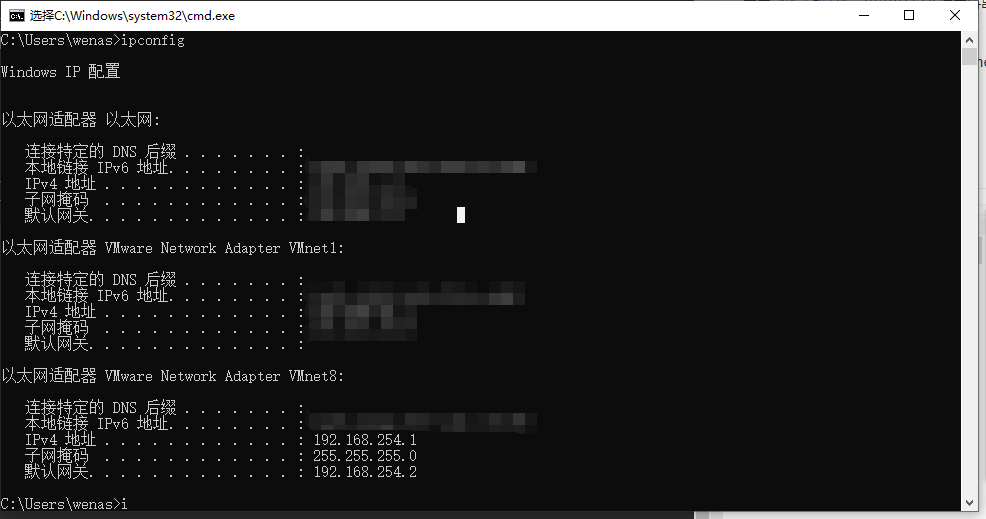
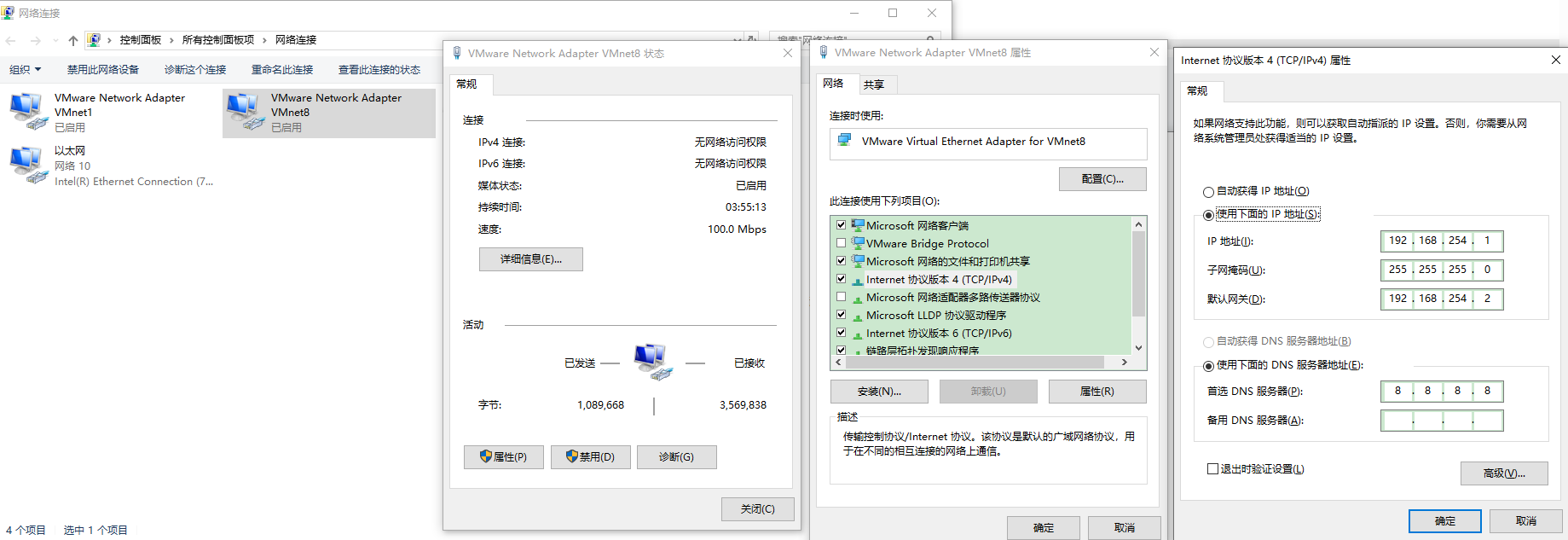
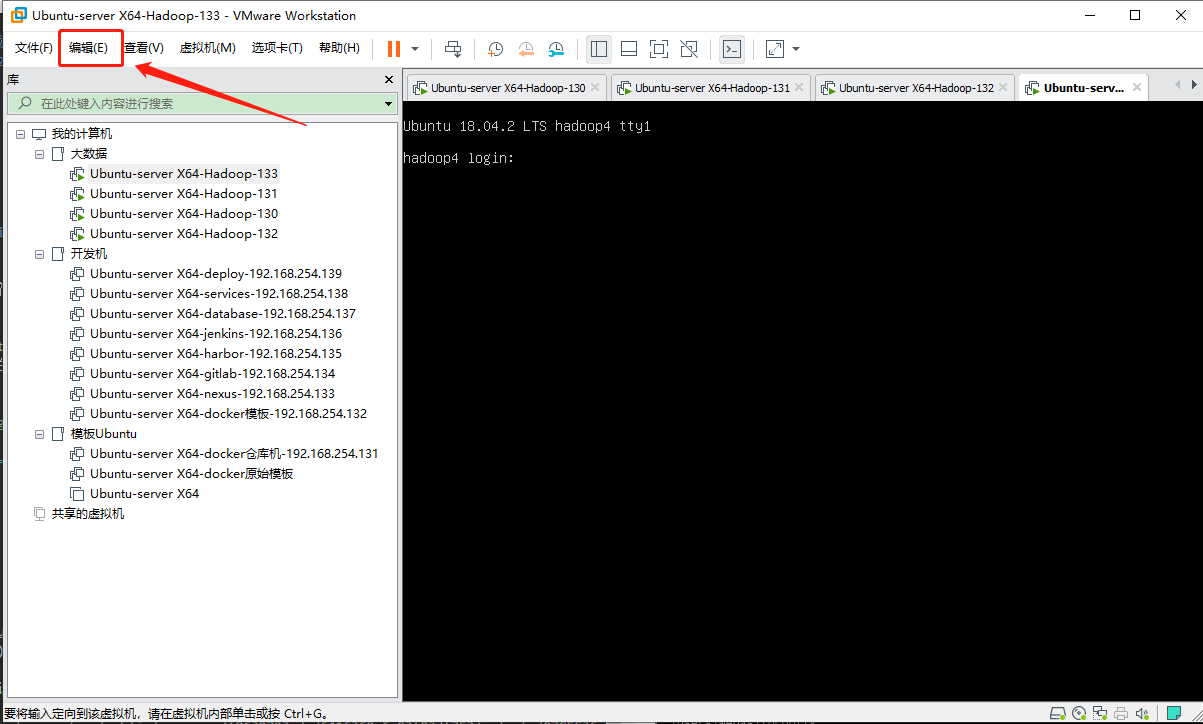
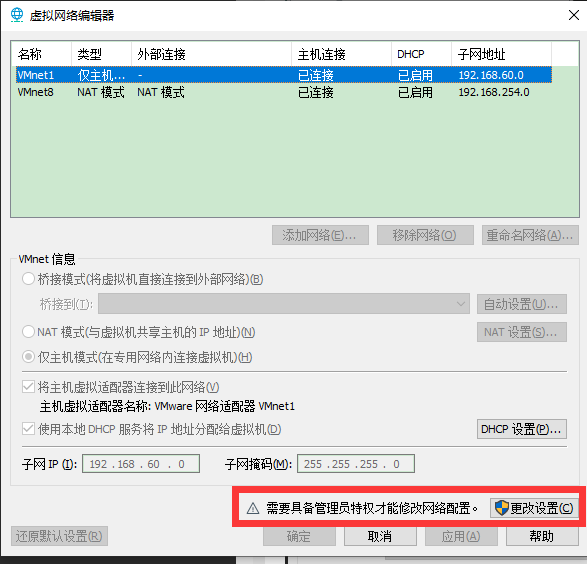


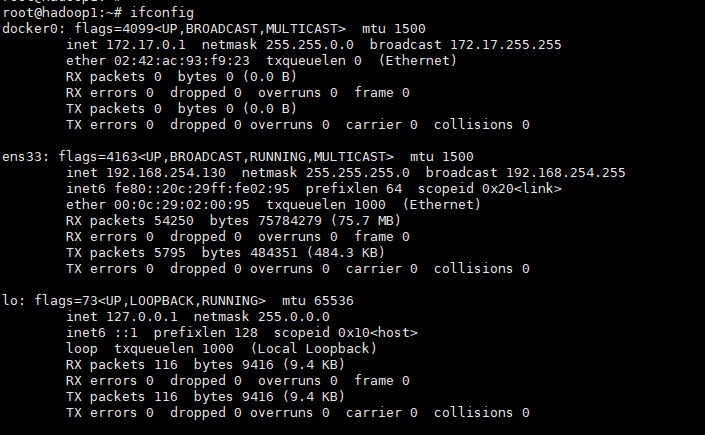












评论